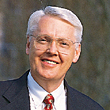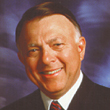Lockheed Martin Corp., which has owned the No. 1 ranking on Washington Technology's Top 100 list since 1995, grew even stronger in 2001."Last year was a record year for orders at Lockheed Martin. We have a backlog of more than $70 billion [and] we're on the upswing in customer satisfaction," said Arthur Johnson, senior vice president for corporate strategic development.The company won the development contract for the Joint Strike Fighter airplane, worth $19 billion over the next 10 years; started the production contract for F-22 aircraft; and purchased OAO Corp. and began integrating its managed services capabilities into Lockheed Martin Information Technology.Lockheed Martin strengthened its balance sheet last year, according to Paul Nisbet, principal with JSA Research, Newport, R.I., an aerospace research firm."They have lowered their debt quite well. They made more divestitures than purchases. Their debt at the end of last year was about $8.5 billion, and it had been up in the double digits," Nisbet said.While much of the attention paid to Lockheed Martin goes to its high-profile military aircraft programs, the company quietly maintains its position as the largest IT provider to the federal government, more than twice the size of the second company on the Top 100 list."Their IT contracts are not consistently very large and average a lot less than aircraft development," Nisbet said. "There are gobs of IT contracts, but you don't hear too much about them."The company describes its business mix as being 50 percent to 55 percent defense-related, 25 percent to 30 percent civilian government agencies and commercial customers, and the balance made up of international sales.Air traffic management is one area where Lockheed Martin holds a dominant position. The Federal Aviation Administration tried last year to award the En Route Automation Modernization contract, worth hundreds of millions of dollars over 10 years, to Lockheed Martin without running a competition, but Raytheon Co. protested and the agency decided to go through a competitive bidding process. The request for proposals has been released, but Raytheon has filed another protest over the design of the RFP, contending that it favors Lockheed Martin.When it comes to IT contracts, Linda Gooden, president of Lockheed Martin Information Technology, lists as significant achievements winning a place on Encore, the $2 billion Defense Enterprise Integration Services contract, and taking on a $378 million, 10-year task order for the Defense Department's Network Infrastructure Services Agency-Pentagon (NISA-P) project, serving 25,000 computer users in the department. These are in addition to numerous IT contracts with agencies scattered throughout the government.Gooden counts most of the government's biggest agencies among the company's clients: Agriculture, Commerce, Defense, Energy, Environmental Protection Agency, the General Accounting Office, Health and Human Services, Justice, NASA and the Social Security Administration."There are probably only a couple of agencies we don't serve at all today," Gooden said.The addition of OAO into Gooden's sector of Lockheed Martin brought in almost 2,000 seasoned IT professionals and more than 100,000 seats in desktop outsourcing contracts, she said."One of the upcoming opportunities is the Army Enterprise Infostructure Technology job," Gooden said. "OAO brought us a very well-managed seat management operation, and we have software and knowledge management, [so] that's an area where collaboration will be very good."Homeland security has great potential for Lockheed Martin, but it also has particular meaning for the company. The day the Pentagon was attacked, 200 Lockheed Martin employees were working there on the NISA-P contract."Our guys were evacuated with everyone else," Gooden said. "They went to one of our other programs, set up a crisis room, the client joined them, they put together a plan and approach ... and went back in at 7 p.m." to begin the daunting task of restoring capabilities."The company's own close encounter with the attack provides more insight into the meaning of homeland security, Gooden said."A lot of what we do we never thought of as putting people at risk," she said. "We're much more cognizant of the fact that it is in the forefront."But the advent of homeland security as a contracting opportunity has yet to emerge, Johnson said."For the most part, the government is still working to get its arms around the bigger homeland security issues," he said. "For the things we do, the customer is still, for the most part, in the formative stages."Lockheed Martin is eyeing two major opportunities at the newly created Transportation Security Administration, Johnson said. One is to train the security screeners working at airports around the country; the other is to integrate explosive detection systems into screening stations.Vendors should be selected very shortly because the congressional mandate is to have the systems and trained personnel in place before the end of the year. Johnson said, however, that John Magaw, the agency head, is on record saying he's not going to make that deadline. Lockheed Martin also hopes to take a leadership position in other areas of homeland security. For the U.S. Postal Service, the company is working to develop new, large postal sorters capable of filtration, detection and forensic analysis to guard against anthrax and other possible threats, Gooden said."Our company is really applying its expertise in many areas [such as] border security and tracking bioterrorism agents," she said. "We look at technologies [we've] developed for locating deadbeat parents, which go into thousands of databases and identify deadbeat parents who are delinquent ... and think that's another system that may have broader implications as we try to identify terrorists in the country."XXXSPLITXXX-It's hard to believe that the second biggest contractor to the federal government could actually suffer from an identity crisis, but after a spate of acquisitions over the past two years, Northrop Grumman Corp. admits to having a little bit of trouble being fully recognized these days."Part of our problem is that we are better known by all of the brand names we've bought recently," said Herb Anderson, president of Northrop Grumman Information Technology. He was referring to new assets that include Litton Industries Inc. and Federal Data Corp., as well as the federal business units of Comptek Research Inc. and Sterling Software."One of our biggest challenges is to get the government to recognize that we are Northrop Grumman Information Technology, and that all these companies and all of their capabilities are part of us now," he said.The company has plans to kick off a major advertising campaign this spring. "We want to brand our name so that everybody knows we are a first-tier systems integrator in the federal space," Anderson said.Luckily, this challenge ranks as relatively small, because Northrop Grumman had no trouble hanging onto its No. 2 position on Washington Technology's Top 100 list of federal prime contractors in 2001, earning nearly $1.5 billion in prime contracting dollars and capturing two of the year's biggest opportunities. The company last year won the 10-year, $700 million Army CECOM Software and Systems Engineering Support contract and, in a joint partnership with Computer Sciences Corp., the 10-year, $2 billion National Security Agency Groundbreaker outsourcing contract.Other significant wins include the $200 million U.S. Postal Service IT Support Services contract and the $150 million NASA Scientific and Engineering Workstation Procurement III award.Anderson credits much of Northrop Grumman's recent success to its acquisition strategy. The Litton IT companies ? PRC Inc. and TASC Inc. ? were both fully integrated with Northrop Grumman Information Technology in 2001, which helped the company expand its reach into agencies such as the NSA and Postal Service. It also helped boost its core capabilities to include command and control, information assurance, security, intelligence systems and services and air traffic control systems, as well as systems integration, networking and enterprise hardware and software solutions."With our scale now, we are able to pursue larger jobs that we had not been able to go after before," Anderson said.Jean Stack, a vice president of Houlihan Lokey Howard and Zukin, an investment bank, agreed. "Because they provide the full range of support, from the most high-tech business to the lowest-tech business, they're absolutely in a position to benefit from the continuing outsourcing trends in the market, whether it be for homeland security purposes or due to the aging of the government work force or due to additional services needs across the board," she said.In fact, the company plans to go after just about every major contract offering in the federal space this year, including the $2 billion Navy Spawar FMS Advanced Tactical Data Link; the $1 billion Air Force Range Support Services contract; and the $500 million Justice/INS Field Office Support/Hardware Maintenance contract.That also includes any homeland defense opportunities that might arise. Northrop Grumman expects to go after the Immigration and Naturalization Service's Exit-Entry system and has already teamed up with Raytheon to bid for the Transportation Security Administration's Explosive Detection System/Explosive Trace Detection General Contractor Program. "I think there is definitely going to be a major marketplace there, and as such, homeland security will be a major thrust for us," Anderson said. He noted that Northrop Grumman has been working for years in the field, performing related work such as vulnerability assessments, building 911 emergency response systems and analyzing the effects of weapons of mass destruction.In preparation, Northrop Grumman last year formed an Integrated Product Team to gauge the corporation's capabilities as they relate to the homeland security challenge. The team cuts across all sectors of Northrop Grumman, with the IT unit leading the effort. Anderson said the company's capabilities and systems integration expertise enables it to fuse all elements of the national homeland security strategy: detection, preparation, prevention, protection, response and recovery.Northrop Grumman's noticeable growth in state and local work in recent years will also help position it for future homeland security contracts, Anderson said. The company garnered just $10 million in state and local revenue three years ago; in 2001, it took home almost $140 million in contract revenue.Among its contract wins last year were the 10-year, $250 million Austin Automation Enterprise System, the $85 million Texas Department of Health Services indefinite delivery, indefinite quantity contract, and a $28.5 million contract to provide electronic benefit transfer (EBT) service to the Illinois Department of Human Services.Anderson said Northrop Grumman's capabilities in data center operations, workstations and networking are directly transferred to the state and local market, but the company's experience in 911 systems and command and control will also make it a perfect fit for cities and counties looking to prepare their jurisdictions against terrorist threats. "We're already pursuing a couple of cities to see if we can help them set up their own homeland security control centers," he said. For all of its recent success, Northrop Grumman faces a number of immediate challenges, Anderson said, not the least of which is managing its growth while maintaining a win rate that continues to top 50 percent. The company's IT sector has doubled in the last two years and ? setting aside its many acquisitions ? has also experienced 11 percent organic growth.Anderson said the trick is to take advantage of its new scale, synergies and capabilities without losing anything in the process. The task is made more difficult by the fact that Northrop Grumman is considering acquiring TRW Corp., a billion-dollar services company. If pursued successfully, the move could leapfrog the company ahead of perennial government contracting leader Lockheed Martin, according to Stack.Anderson believes such growth risks are necessary to the company's long-term strategic objectives. "We need to be able to penetrate new markets, expand our current ones, pursue larger jobs and take away market share from other people," Anderson said. "Our major goal is to pursue just about any job sitting out there." XXXSPLITXXX-When the Boeing Co. sold its information technology services unit three years ago, the company was making a move to focus on its core aerospace, communications and defense businesses. But that doesn't mean the company isn't a powerhouse of IT and systems integration.Coming in at No. 3 on the Washington Technology Top 100 with nearly $1.4 billion in contract obligations during fiscal 2001, Boeing has been aggressively pursuing IT-rich projects, such as command and control systems, communications, air traffic control, missile defense and intelligence and surveillance.The company, which made its name building airplanes and rockets, sees two interrelated trends driving its business going forward, especially since the Sept. 11 attacks on the World Trade Center and the Pentagon.One is helping the Department of Defense transform itself as it addresses 21st-century security needs. The second is using information technology to change the way both the government and commercial organizations conduct business. "Both opportunities require us to think smart, work together and act swiftly," said Phil Condit, Boeing's chairman and chief executive officer, during a Feb. 20 speech to the American Institute of Aeronautics and Astronautics. "We need to rethink our roles, our participation and our missions. This means flexibility and a willingness to change."Like many companies, Boeing set up a homeland security unit in the aftermath of the terrorist attacks to align the company with customer needs and coordinate its response to new opportunities, said Boeing spokesman Randolph Harrison.Two homeland security projects Boeing is pursuing are the explosive detection systems at U.S. airports and the training of 30,000 new government employees that will be part of the Transportation Security Administration. The contract for the explosive detection systems is expected to be awarded in May. Boeing has teamed with Siemens AG to pursue the contract. "Boeing believes the primary element of successful homeland security is information," Harrison said. "Boeing will pursue opportunities to provide quantum improvements in situational awareness for military and civil customers and to significantly improve the safety and efficiency of the commercial aviation system."The security threats to the United States are no longer easy to spot, so "today, we need to structure our strategies, products and technologies not around threats, but rather around capabilities, and to do so in anticipation of ? rather than in response to ? new and evolving threats," said Jim Albaugh, president of Boeing Space and Communications. He spoke Nov. 16, 2001, at an Air Force Association meeting.The recently won Future Combat System contract provides a prime opportunity for the company to showcase its capabilities. Worth $154 million during the current phase, the contract was won by a joint Boeing-Science Applications International Corp. team. The team will act as the lead systems integrator in the development of a system of armored vehicles that will be connected via a network, collecting and sharing battlefield data as well as receiving intelligence and other information from outside the battlefield. As the project rolls out, it has a potential value of $4 billion.Many of Boeing's communications and IT-related projects fall under the purview of Albaugh's Space and Communications division, based in Seal Beach, Calif. That unit had $10 billion in revenue during fiscal 2001 and has 43,000 employees.While the unit also is in charge of launch services, missile defense, and human space flight and exploration businesses for Boeing, the company sees the government and commercial information and communications market as the largest growth opportunity for that part of Boeing, according to the company's 2001 annual report.Opportunities in the government sector include work such as airborne mission systems, space systems, satellite systems and integrated systems of systems.Specific contracts Boeing is pursuing include the Army's Joint Tactical Radio System, a $2 billion contract to develop and integrate new radios that will allow units to communicate and share data in ways nearly impossible now. Boeing's team includes TRW Inc., BAE Systems plc with Harris Corp. and Rockwell Collins Inc. They are facing off against a team being led by Raytheon Co., Lexington, Mass.Another project that fits into Boeing's strategy for providing the military with an integrated view of the battlefield is the Coast Guard's Deepwater program, a 20-year effort to improve and integrate the Coast Guard's ships, aircraft, helicopters and shore facilities. Boeing is leading a team that submitted a $2.3 billion bid to develop, field and sustain the system.Another major initiative the company launched during 2001 is its proposal to revamp the U.S. air traffic control operations using satellite rather than radar-based systems.NASA remains one of Boeing's largest customers as the company is the space agency's largest contractor. Indeed, part of Boeing's rise in this year's ranking is because of its 50 percent ownership of the United Space Alliance, which holds NASA's Consolidated Space Operations Contracts for the space shuttle. In previous years, USA was ranked independently on the list, coming in at No. 3 last year. But this year, Washington Technology evenly divided the revenue between Boeing and USA's other co-owner, Lockheed Martin. On its own, USA brought in about $1.6 billion in prime contracting dollars.Other NASA work includes the International Space Station, for which Boeing is the prime contractor. On the military side of space, Boeing is heavily involved in missile defense programs. It is the prime contractor on the Ground-based Midcourse Defense Segment, formerly called the National Missile Defense program.Including the manufacturing of military aircraft, satellites and missiles, Boeing's government work accounts for 40 percent of the company's $58.2 billion in 2001 revenue.The importance of the government has grown steady since 1993, when the company reported that only 20 percent of its revenue was derived from its government business. Boeing's overall revenue also has nearly doubled since 1993, when it reported total revenue of $25.4 billion. XXXSPLITXXX-Science Applications International Corp.'s primary services to U.S. government agencies has not changed since Sept. 11, said Duane Andrews, corporate executive vice president at SAIC. "We supported the government before 9-11 with security-related services, and we continue to do so now as homeland defense and Operation Enduring Freedom bring security issues to the forefront," he said.SAIC has recently been awarded a contract to provide facilities, training and support for the Federal Aviation Administration's Air Marshall program, which is tasked with safeguarding commercial aircraft against terrorist seizure and misuse. Other civilian agencies involved in homeland security have turned to the company to leverage its unique Vehicle and Cargo Inspection System (VACIS), which was originally developed as part of a Customs Service project to identify drugs secreted in shipping containers and trucks entering U.S. ports or crossing its borders.VACIS operates much faster than screening by hand, which can't be relied upon to find all contraband, he said. VACIS "is the only one of its kind deployed today that is used to examine trucks and shipping containers to scan for hidden compartments," he said.Andrews said he has "commitments and interest from dozens of government customers" who want to use the technology to identify larger weapons and weapons of mass destruction that may be hidden in vehicles or transport containers.While many exciting opportunities in homeland defense are only now appearing among civilian agencies, SAIC has been actively involved in the military agencies since Sept. 11, providing telecommunications and IT support for unified commands at the Defense Department and technology infrastructure for coalition partners. In 2001, SAIC was awarded a $3 billion contract by the Defense Information Systems Agency to support the Defense Information System Network Global Solution. "We are the network manager for the Defense Department," Andrews said.Other work from the Defense Department accounted for the lion's share of the company's $3.5 billion in federal government-derived revenue. Recent awards have included: ? A contract from the Air Force to provide services under the Flexible Acquisition and Sustainment Tool (FAST) program. The program was established to improve responsiveness of warfighter support. The contract is estimated at $1.25 billion and will be performed over seven years.? A task order from the Navy Space and Naval Warfare System Command to provide systems engineering and integration technical support. The task order is potentially worth more than $596 million and was awarded by the General Services Administration's Federal Systems Integration and Management Center through the GSA Millennia contract.? A contract to AMSEC LLC, a partnership between SAIC and Northrop Grumman Newport News, for integrated installation support services for Navy militarized and off-the-shelf command, control, communications, computers, intelligence, surveillance and reconnaissance systems. The five-year contract is valued at more than $422 million.? An Air Combat Command (ACC) Contracted Advisory and Assistance Services II contract to an SAIC-led team. Under the terms of the agreement, SAIC will provide management and professional services, analyses, evaluations, engineering and technical services to command headquarters at Langley Air Force Base, Va. The five-year contract is potentially worth $300 million.? The Industrial Prime Vendor (IPV) contract from the Defense Logistics Agency Defense Supply Center Philadelphia to support the Air Force's three Air Logistics Centers in Warner Robins, Ga., Oklahoma City and Ogden, Utah. This is an extension of the previous supply center IPV contract with three one-year options. The contract is potentially worth more than $200 million.Civilian agencies account for about $900 million of SAIC's government revenue, Andrews said. The company supports NASA from the desktop to quality control on space missions. It also provides basic research for the departments of Energy and Transportation and the Environmental Protection Agency. SAIC also is a prime integrator for the Immigration and Naturalization Service and the FBI. Andrews emphasized that IT-related work is a subset of the support SAIC provides the government sector. A science and technology company, SAIC also brings specialties in bioengineering, nuclear science, mathematics and modeling and other areas of pure science.The company was recently awarded a contract from the National Cancer Institute to continue performing and supporting cancer and AIDS research at its federally funded research and development center in Frederick, Md. The five-year contract is valued at $1.2 billion. The center has the option to extend the contract for two more years, which would increase the value to $1.8 billion.The uptick in government business has helped offset the downturn in commercial revenue, especially in the telecommunications industry, in 2001, Andrews said. The year provided SAIC with "no significant disappointments," he said. "We lost none of our major recompetes and won our fair share of new competitive bids."The key challenge for SAIC is increased competition in the government sector. New faces are appearing in competitive bid situations. "The competition is getting tougher, and any time there is a new player, you need to learn how to compete against them. We have been in the business for 33 years, but you must always learn to compete," Andrews said.In the meantime, he is depending on the pedigree of SAIC to carry the company through another successful year. To Andrews, success requires experience, an understanding of customer needs and the ability to respond quickly. "You can't study a problem for a year. The customer wants the solution within a year," he said.Success also requires, in Andrews' words, "the ability to attract and retain people with both domain knowledge and appropriate clearances." He thinks SAIC, an employee-owned company, has the edge. XXXSPLITXXX-While General Dynamics Corp. is most known for building tanks, airplanes and other vehicles for governments worldwide, the company lately has been aggressively building out information technologies as one of its core talents. In 2001, the company did an internal realignment of its Information Systems and Technology group to more closely align with customer needs. To pull in more expertise for the command and control realm, the company purchased Motorola Inc.'s Decision Systems group for $825 million in September. The company also spent 2001 pursuing and supporting IT contracts that are traditionally more associated with IT integrators. As a result of these activities, General Dynamics grabbed the No. 5 spot on Washington Technology's list of Top 100 federal prime contractors, up from No. 9 last year.General Dynamics' emphasis on IT, which is playing out especially on its home turf of defense, is not a surprising one, said Ray Bjorklund, vice president for market research and consulting company Federal Sources Inc. of McLean, Va."The overall trend in the industry for many defense integrators is to get away from building hard machines and get more into exploiting the capabilities of information technology. Starting in the Gulf War, and now with Operation Enduring Freedom, there is a recognition across military departments about the importance of leveraging IT to fight wars. General Dynamics has been on that trend for some time," Bjorklund said.And the approach has paid off. In the first quarter of 2002, the Information Systems unit led all the other General Dynamic groups in revenue growth, and even overall revenue, by a startling degree. "Information Systems and Technology was the sales leader for the first time in the four groups. Its total revenue was up by 42 percent," said Nicholas Chabraja, General Dynamics chairman and chief executive officer, during an investor conference call in April. Information systems brought in $871 million for the first fiscal quarter of 2002, which ended March 31. In that same time, Marine Systems brought in $864 million; aerospace, $763 million; and combat systems, $573 million. Much of the spurt in this revenue growth came from the Decision Systems group, Chabraja said. The group, formerly known as Motorola's Integrated Information Systems Group, is based in Scottsdale, Ariz., and has more than 3,000 employees who specialized in secure communication, information assurance, situational awareness and integrated communication systems. "This acquisition strengthens our position in communications and information technology for military and government customers, and strengthens our capabilities in [command, control, communication, computers, intelligence, surveillance and reconnaissance]," Chabraja said.The company expects 2002 revenue of approximately $830 million from Decision Systems group.The rest of the information technology group has also been busy. Chabraja said 18 percent of the growth in the IT group was organic.In December, General Dynamics Advanced Information Systems was awarded three contracts worth $60 million by the Navy for engineering and operational support for Trident II submarines. The Electronic Systems group was awarded a $7.8 million contract to demonstrate how the company's data fusion technology can integrate radar, missile and laser threat-warning data with other digital battlefield information to improve the situational awareness of Army helicopter crews.Much of the other work General Dynamics performed went into support of partnerships. For the Electronic Data Systems Corp.-led Navy-Marine Corps Intranet program, the company's telecommunication systems group was awarded $16 million to upgrade the telecommunications infrastructure in Navy installations throughout Europe, the Far East and the Middle East. As a subcontractor to Computer Sciences Corp.'s $2 billion National Security Agency Groundbreaker project, General Dynamics will provide the telephony and networking infrastructure, work that is potentially worth $200 million. And in May 2001, the company was awarded a $3.2 million dollar contract by Raytheon Co., Lexington Mass., to design and develop the radar data storage system for the Navy's Super Hornet aircraft.On the research side, General Dynamics Robotic Systems won two agreements from the Army Research Laboratory, collectively valued at $66 million, for robotics research and development. The work focuses on developing robotic technologies to enable high-speed, autonomous movement in unstructured environments. The work is to be folded into future combat systems.General Dynamics continues to make forays into traditional information technologies. A few years back it surprised the government IT community by assembling a team to compete on the NMCI project. It lost, but the move sent a message to other IT integrators that General Dynamics was serious about the space.And for 2001, the company announced the team it assembled to pursue the Army's Warfighter Information Network - Tactical, a potentially $7 billion program to develop and field a tactical communications network for the Army. The winning contractor will perform engineering, production, testing, fielding, training and support. The General Dynamics team includes: BAE Systems Plc, Wayne, N.J.; DynCorp, Chantilly, Va.; Laguna Industries, Laguna, N.M.; Log.Sec Corp., Warrenton, Va.; Northrop Grumman Corp.'s Information Technology and Defense Mission Systems group, Herndon, Va.; Opnet Technologies, Bethesda, Md.; Solers, Arlington, Va.; Veridian, Fairfax, Va.; and Verizon Communication Inc.'s BBN Technologies, Cambridge, Mass.Chabraja said General Dynamics sees a robust future with the general increase in Defense Department spending as well as the possibility of homeland security work, even if the opportunities have yet to get before contractors. "We are beginning to see opportunities emerge that we are working, but it is always hard when getting new orders to have someone even internally say what of that [new work] is proportioned to homeland security and what is traditional defense," he said.Nonetheless, the future remains bright for government defense and IT contractors such as General Dynamics. "We are going to live in a society that will protect ourselves and our borders more securely, and that will result in more opportunities for contractors," Chabraja said. XXXSPLITXXX-Computer Sciences Corp. proved not to be recession-proof in 2001, with a fourth-quarter operating income shortfall of $150 million and a 4,000-person downsizing of its consulting practice. Senior management was reshuffled, business units were realigned, and veteran insider Ed Boykin was appointed president and chief operations officer last July.The changes appear to have been good for the company. While it slipped out of the top five for the first time since 1994, CSC's continued growth nevertheless places it at No. 6 in Washington Technology's Top 100 list.Analyst Moshe Katri, managing director for investment bank SG Cowen in New York, is bullish on the company's stock. He said that while the final-quarter loss was serious, recovery has been relatively rapid. The restructuring is paying off, helped along by a healthy 12.3 percent growth in overall 2001 revenue. "Historically, CSC has been a well-run company. But sometimes you have one or two execution issues," Katri said. "They're beginning to turn the operating margins around. That they're effective is due to the fact that they're addressing these execution issues."In particular, Katri credits Boykin with realigning CSC's business units, reduced to seven from nine with one or two additional reductions likely, he said. The company also has restructured at least two of its underperforming commercial-sector contracts in order to break even or turn a small profit. But it's the continuing strength of the federal information technology sector that, in Katri's view, will help CSC down the road.Effective April 1, the company formed a homeland security unit to apply its IT expertise to biometrics identification systems development, as well as information and physical security and security training. Another point of emphasis is enterprise integration which, according to Pat Ways, senior vice president for business development in CSC's Civil Group, has become even more important since the Sept. 11 terrorist attacks. "One of the biggest problems is the ability of customers to share information across stovepiped systems," Ways said. "Data now can't easily be shared across agencies. Much of that is technical in that they have old systems. Some is political, with certain agencies being unwilling to share information. Enterprise integration can go a long way to solving those problems."On the defense side, CSC in 2001 continued to work for various branches of the military on force-structure modernization and enhancements to logistics operations, particularly in supply-chain visibility. Austin Yerks, senior vice president for business development in CSC's Defense Group, said the armed forces believe they may save billions if IT systems are successfully integrated and modernized.Outsourcing some, if not most, of the military's day-to-day data center operations would also enable defense organizations to focus on their core mission by taking on the ownership, operation and management of IT infrastructure. "It's not just the cost of the [contract]," Yerks said. "The true savings is freeing up the uniforms. In the long run, you can move them into more appropriate roles."In a 2001 defense-side win, a CSC-led joint venture called the Eagle Alliance, a partnership with Northrop Grumman Corp., was awarded Groundbreaker, a $2 billion, 10-year contract to provide the National Security Agency an upgraded and secure distributed computing, networks, enterprise systems and telephony. The alliance is providing the NSA with state-of-the-art desktops, servers, office automation tools, secure and non-secure voice and video services and rapid access to NSA networks. Under terms of the agreement, the alliance has assumed outsourcing responsibilities for a large portion of the NSA's information technology infrastructure functions. Other CSC wins as a prime contractor included a five-year, $100 million contract to support the Department of Defense Joint Test and Evaluation programs. The company will help the department test and evaluate tactics, techniques and procedures proposed to improve coordination between all branches of the military. The Army Aviation and Missile Command also selected CSC to support simulation and development of missile and aviation systems at Redstone Arsenal, Ala. CSC will provide a broad range of simulations, modeling and associated engineering support services for both missile and aviation systems. The contract is valued at $145.8 million if all options are exercised over a five-year period.In March 2002, the end of its fiscal year, CSC was one of nine companies selected by the Defense Information Systems Agency (DISA) to provide global integration solutions and services. CSC estimates the value of the indefinite delivery, indefinite quantity award to be $225 million to the company over seven years. Under the agreement, known as Encore, CSC will provide IT solutions for all DISA customer organizations in areas such as command and control, intelligence and mission-support as well as the Global Information Grid. Encore is a continuation of two previous contracts CSC held with DISA to provide similar work.On the civil side, 2001 wins include an Environmental Protection Agency contract worth an estimated $285 million over seven years. CSC will create a central data exchange to provide a single point of entry for required environmental reporting from federal, state and local government agencies, tribal communities and industry. CSC will operate and maintain the exchange on behalf of the EPA.The company also won a contract to provide computing, network services and other technology support to the National Library of Medicine's Office of Computer and Communications Systems. If fully executed over the proposed 10-year term, the project could be worth up to $223 million. Additional wins included a $180 million IT-services contract with the Jet Propulsion Laboratory in Pasadena, Calif., and a telecommunications modernization effort for the State Department, valued at $108 million.Given its 60 percent win record when it bids, CSC's major concern now appears to be one of agenda setting. "I don't have 50 systems engineers somewhere downstairs waiting for their next assignment," said Yerks, who heads the Defense Group. "Our people are well and fully employed. The challenge is getting priorities set so we can move the right people to the right problem." XXXSPLITXXX-Raytheon Co.'s financial woes did not prevent solid growth at its Command, Control, Communication and Information Systems unit, which handles a good portion of its government systems integration business. Revenue at the division rose 10 percent to $3.8 billion last year, and Frank Marchilena, president, projects an 8 percent rise in 2002 to just more than $4 billion. The division produces a wide range of products and services, including systems integration.Raytheon is ranked seventh on Washington Technology's Top 100 federal prime contractor's list with about $804 million in 2001 government systems integration revenue, down from the fifth position last year when prime contract revenue neared $1.4 billion.Three years of declining profits, including a net loss of $703 million for 2001, and falling revenue have plagued the fourth-largest defense contractor. But there are signs things may be improving. "The core defense business continues to do well," said Pierre Chao, aerospace and defense analyst for Morgan Stanley, in a recent report. Raytheon Aircraft has struggled for some time, contributing to the problems, but "we are encouraged that the worst appears to be over, and we see signs that management's considerable efforts to improve this business are bearing fruit," Chao said.Morgan Stanley maintains a strong buy rating on the stock, raising its price target from $40 to $46 after fourth quarter results were released.As a standalone business unit with its own profit and loss statement, Raytheon Co.'s woes don't affect Raytheon's Command, Control, Communication and Information Systems all that much, according to Marchilena. Known as C3I, the Marlboro, Mass.-based subsidiary is divided into three divisions: imagery and geospatial systems; command, control and communications systems; and strategic systems.Primary customers include the armed forces, intelligence units and the Federal Aviation Administration. About 95 percent of the unit's revenue comes from defense and intelligence, the remainder from commercial work.Marchilena has been at work promoting C3I's software development capabilities, which tend to get overshadowed by the missile systems, targeting systems, turboprop aircraft and Beech and Hawker jets of Raytheon's other subsidiaries, or even by the radios, air traffic control systems and radars and satellite communications systems produced elsewhere within his unit. In fact, Raytheon's IT services, which have long been split between C3I and Raytheon Technical Services Co., may soon be combined. "It is possible in the near future they will work themselves into a segment of Raytheon that is strictly IT," Marchilena said. "We've been working on it as a company, and if it's going to happen, it will happen this year."Marchilena calls software development for complex, highly reliable information systems his unit's core competency. "We would like to play more of an integration role," he said. "We're seeing a tremendous amount of work, especially in the intelligence world, to integrate systems."One of his unit's accomplishments for 2001 was the spinoff of one such product, SilentRunner, into its own profitable division. SilentRunner creates next-generation network security analysis products.High-valued 2001 contracts include:? The Army Airborne Command and Control System (A2C2S), a contract valued at $100 million that includes a fully integrated digital airborne tactical operations center and implements critical battlefield command and control functionality.? Renewal of the contract for the Command and Control Switching System for the Defense Red Switch Network, procured via the Air Force, valued at up to $430 million over 10 years if all options are exercised.? The Co-operative Engagement Capability contract for the Navy, valued at $144 million. The system provides key capabilities for implementing net-centric warfare.? The Standard Terminal Automation Replacement System (STARS), which replaces the aging airspace management system at 173 FAA facilities and at almost 200 military facilities, valued at $98 million in 2001 and more than $1 billion over the life of the project.The push to bolster homeland security has not changed his unit's business plan, Marchilena said. But the movement has spurred some specific projects. C3I has already won some contracts in the intelligence community related to homeland security initiatives, but most such opportunities are yet to come, Marchilena said. The unit is not just waiting for requests for proposal, however. It has developed a biometric facial recognition system, supported by a massive computer complex, that is being tested at Boston's Logan International and Dallas Fort Worth International airports in anticipation of future security contracts. Also in development is a First Responder Command and Communications Vehicle that provides interoperable communications among mutual aid providers at major incident sites.In fact, the ability to facilitate information sharing across disparate units represents a significant opportunity, he said. One major project for 2002 is the Joint Tactical Radio System, developing the first programmable radio for the U.S. military, for which C3I is serving as systems integrator. "Someone has said that if you take all the information we have on the battlefield and get it to everyone else, we have tremendous growth opportunity," Marchilena said. "Right now, we collect the data but do not dissipate it properly. ... In the services, there are literally radios that don't talk to each other."Addressing this has become a priority. "We saw a buildup after Desert Storm and Kosovo, but Afghanistan has really brought home that this really needs to be done," Marchilena said. "Warfare is more and more based on knowledge and information. The key is getting it to everyone in the battlespace."Initiatives such as the Airborne Communications Node, being developed by the Defense Advanced Research Projects Agency, will solve that through a global communications mechanism. Raytheon and BAE Systems, based in Farnborough, Hampshire, U.K., are in phase two of that project, anticipating a lab demonstration by this summer.Raytheon is also producing terminals and performing other work for the Secure Mobile Anti-jam Reliable Tactical Terminal system. For C3I's government customers, the challenge is devising ways to accomplish its lofty goals. "It's getting all the requirements out, getting everyone to line up and agree to do it," Marchilena said. "They've got to be joint programs. Everyone has been stovepiped. Now it's a question of breaking that apart and talking to each other."Internally, C3I's challenge is to align resources and development with those goals, he said. Then it's a matter of competing, winning and performing on those opportunities.XXXSPLITXXX-The biggest challenge facing TRW Inc. is meeting the pressing needs of the U.S. government and military in an era of increasing international strife, said Donald Winter, president and chief executive officer of TRW Systems in Reston, Va.The Cleveland-based aerospace, information technology and automotive giant accomplished this task well in 2001, ranking No. 8 on Washington Technology's list of Top 100 prime contractors. Seventy percent of TRW Systems' work comes from the defense and intelligence communities; 20 percent comes from other federal agencies. The unit had $3.15 billion in sales last year, compared to $3.25 billion in 2000."We seem to have gone from a period in which we had a very active cold war to ... at least high expectations of peace and stability, and it seems like the pendulum is swinging back the other way," Winter said. "I expect it will have continued ramifications for our business ? significant opportunities and challenges."To meet the opportunities and challenges of a federal government focused on homeland security and defense, TRW Systems set up a homeland security office under Bill Studeman, former deputy director of the CIA and former director of the National Security Agency.Winter said: "There are always questions when you get shifts in your marketplace as to the competitive environment. We continually look at what our competitors are going to be doing. We are all kind of jockeying for position here."A year ago, companies didn't have homeland security business units, but now they all do, said Jon Kutler, chairman and chief executive officer of Quarterdeck Investment Partners LLC, a Los Angeles investment house. Within a business as large as the $16 billion TRW, "there will be a number of technologies and capabilities extremely applicable to homeland security. It will be a challenge to pull all of those units together to market under a single banner," he said.TRW is working to improve security, communications and command and control systems at Jacksonville, Fla., International Airport. It also won a five-year Transportation Department contract worth up to $31 million to assess the level of security at 55 critical U.S. ports.And the company has witnessed growth in its defense command, control and communications and intelligence business. Its Intercontinental Ballistic Missile system work continues its solid performance, Winter said. TRW has also seen a boost in its training and simulation business, Winter said. Its major wins in the last year include a prime contract worth up to $262 million for exercise and event support to the Joint Warfighting Center, which supports joint military and multinational training and exercises and crisis rehearsals. TRW's team provides scheduling, logistics, simulation, intelligence, database building, distributed learning and other services. Winter declined to discuss Northrop Grumman Corp.'s hostile bid for the 101-year-old TRW, which the TRW board thus far has rejected. "I have continuously stated to our employees and customers that we have three priorities: performing on all of our contract requirements, pursuing new business and making Six Sigma process investments and enhancements." Six Sigma is a program for the implementation of quality principles and techniques meant to enable error-free business performance. "None of that has anything to do with Northrop Grumman," Winter said.Los Angeles-based defense giant Northrop Grumman launched its bid for TRW shortly after TRW's CEO David Cote announced in February he would leave the company to become CEO of Honeywell International Corp. in Morristown, N.J. The TRW board of directors established a chief executive office to direct the company while a successor is sought. The office is led by Philip Odeen as nonexecutive chairman."Whenever you have a prolonged public takeover process, especially one that is hostile in nature, it becomes distracting for operating management," Kutler said. The biggest issue for TRW now is the takeover attempt, whether it is successful or not, he said. "If it happens, they will be part of an IT organization that will be a world leader in size. Two months from now, if they are a standalone entity, they are likely to feel they missed a number of opportunities to make acquisitions in a quickly consolidating marketplace."Questions about TRW's future don't appear to have stifled the interest of job seekers, however. TRW Systems invited 50,000 potential candidates to a recent open house, expecting a few hundred to show up. Two thousand attended, and 500 were selected for interviews. TRW Systems hired 920 people between Jan. 1 and March 31, adding several hundred staff to its ranks, company officials said. The group employs about 15,000.The company's work is "a hell of a recruiting tool. People are interested in us because of the work we do and because they view us as company that has stability and capability," Winter said.Contracts TRW is pursuing include GTN 21, an Air Force network modernization activity with the U.S. Transportation Command. TRW is one of four bidders recently selected out of nine to create designs for the systems architecture and databases for the next-generation Global Transportation Network. The network is used to track cargo and personnel. The final contract award will be made in August, Winter said. The six-year contract will be worth $187 million. Ten one-year awards worth an additional $150 million will follow. TRW has also bid on a five-year, $2 billion Transportation Security Administration contract to provide explosive detection equipment to airports. "We are going to aggressively pursue [TSA] as a major client," Winter said. In the coming year, the firm intends to pursue opportunities in intelligence, Army transformation and missile defense, Winter said. The company is bidding on the Warfighter Information Network-Tactical contract, a 15-year, $7 billion tactical information network that will provide the Army's next-generation communications infrastructure. An award is expected in August.TRW has reached a record backlog of $4 billion in bids, which Winter called "a very nice achievement.""It gives us a lot of belief that we are going to be growing the business here in the future," he said.XXXSPLITXXX-Booz Allen Hamilton Inc. executives expect to strengthen their grip on the homeland security market as the company responds to the sweeping demand for improved protection following the Sept. 11 terrorist attacks.The McLean, Va.-based consulting company, which posted revenue of $2.1 billion in 2001, vaulted to the No. 9 spot on Washington Technology's list of Top 100 federal prime contractors for information technology. Booz Allen generated revenue of $2 billion in 2000 and ranked 12th last year.The private company, which has served governments and businesses for more than 80 years, has 11,000 employees worldwide. It offers a wide range of engineering, information technology and strategy consultation services through its commercial and government business divisions. The nation's war on terrorism has generated fresh business for Booz Allen's federal IT unit, which has secured significant wins in the homeland security arena, company officials said. These efforts include a cybersecurity initiative at the Department of Energy, enterprise vulnerability assessments for the Department of Education, a cyberinfosecurity effort for the Treasury Department and work on a classified collection system.The terrorist attacks on the World Trade Center and the Pentagon "made it crystal clear how vital it is to deal with this very huge problem," said Al Picarelli, senior vice president in charge of the company's federal IT business. With roughly 60 percent of Booz Allen's federal business coming from defense customers and its aptitude for solving complex problems, homeland security work certainly "plays to our strengths," he said.Booz Allen's homeland security practice has been re-energized both by global events and more company investment in this area, according to Picarelli. Homeland security work accounts for roughly 10 percent of his unit's overall business, but that number is likely to swell in the coming years. According to Picarelli, the federal IT unit's largest single client is the General Services Administration "because of the contract vehicles we use." The GSA's Federal Supply Schedules, blanket purchase agreements and Information Analysis Centers offer federal agencies convenient mechanisms to obtain a wide range of management and technology services.Other big clients are the Navy and the Department of Defense, the Department of Health and Human Services and the Internal Revenue Service. The National Aeronautics and Space Administration "is starting to become a large client," but the company's reach extends to "virtually every agency of the government," Picarelli said.The biggest challenge facing Booz Allen executives is managing quality growth, according to Picarelli. Five years ago, company officials opted to grow as fast as possible but sought to manage the growth carefully to sustain its reputation. "That is our No. 1 challenge, and that is a problem for us in that we do not do acquisitions," he said. "We got hurt when the dot-coms took off a few years ago and people began flocking to those companies."The company now has the reverse problem. Today, people are anxious to work for a company with a strong reputation where they can work for important clients on important engagements, he said."We have aggressive people who say we can grow at 35 percent, but we want to maintain our culture. We are happy with our culture. And we have had good double-digit growth; it's been close to 20 percent annually in the public sector," Picarelli said.Although the company suffered no major business disappointments during the past year, three Booz Allen employees perished in the Pentagon attack. "It was a tragic event that had a devastating effect on morale for a long period of time," Picarelli said.Looking ahead, the company will continue to pursue business opportunities in the United States and abroad that focus on homeland security, health care, missile defense and the commercial and military uses of space, company officials said.One trend shaping the company's strategy in the federal market is the president's push for a stronger military, sharper intelligence capabilities and the war on terrorism, Picarelli said. The company also must adapt to government officials' growing tendency to embrace commercial best practices, bundle procurements and seek less customized solutions.A daunting challenge facing Booz Allen ? and others whose bread and butter has been federal work ? is the myriad companies vying for business which weren't in the hunt a few years ago. Also, the playing field is dotted with super-size companies, such as Lockheed Martin Corp. and Northrop Grumman Corp., which are "making big moves on big programs," Picarelli said.There are two important characteristics an IT services company should have to be successful in the federal space: a strong track record and strong existing relationships with federal agencies, said Kevin Plexico, executive vice president at Input Inc., a market research company in Chantilly, Va. This is particularly important for a company to address the government's evolving homeland security requirements. "We believe the government will be relying primarily on its existing vendor relationships to fulfill these requirements. Booz Allen has all of these characteristics and should be well-positioned to be successful over the next several years," he said.Booz Allen's strategy has been to invest in selected markets and devise offerings that make the large prime contractors look its way when bidding on major efforts. "We have a deep understanding of the government's mission, agency by agency by agency," Picarelli said. XXXSPLITXXX-Wall Street has been telling Unisys for the past few years to focus more on information technology services and less on hardware and product resale ? which is exactly what the company is doing."Analysts have told us we need to be more aggressive when it comes to service delivery," said Greg Baroni, president of Unisys Global Public Sector. "We're going to have to strengthen that capability."Baroni, who was hired from McLean, Va.-based KPMG Consulting Inc. in October 2001 to run Unisys' public-sector operations, said he wants to scale back the company's commodity business and build a higher-quality business based on IT consulting, systems integration, network support services and outsourcing. Last year, the company went through an aggressive restructuring to position itself "to take advantage of the inflection in the economy and to clean up our balance sheet," he said. Unisys has jumped from No. 14 last year to No. 10 this year on Washington Technology's Top 100 list. The company had revenue of $709 million from its federal business in 2001, Baroni said. Altogether, Unisys public-sector business represents one-third of the company's $6 billion annual revenue, he said. The company's federal government group has about 3,000 employees. The company's federal business is expected to grow at a rate of slightly less than 10 percent as the company makeover continues this year, Baroni said.A big win for the company on the civilian side in 2001 was a $295 million General Services Administration Federal Supply Service outsourcing contract to provide maintenance and enhancement services for more than 50 major GSA FSS applications. An even bigger win on the defense side was a $314 million chunk of the $1.7 billion Air Force Joint Technical Test and Training Support contract, known as J-Tech. The prime contractor is JT3 LLC, a joint venture of EG&G Technical Services Inc., Gaithersburg, Md., and Raytheon Co., Lexington, Mass. Unisys is concentrating on new opportunities that may unfold this year in enterprise management, outsourcing and homeland security, Baroni said. The federal group is positioning itself to take advantage of IT trends such as service delivery to citizens, efficient operations, work-force needs and information sharing, he said. In the realm of homeland security, company officials see opportunities for information sharing, IT infrastructure protection, positive identification and emergency response and business continuity. The company is developing a business strategy to pursue homeland security opportunities, selecting key partners and establishing a "center of excellence" to demonstrate as many as 21 different solutions.While the company has already identified some of its partners in positive identification, such as Viisage Technology Inc. of Littleton, Mass., Baroni said Unisys will disclose other information sharing partners when it unveils its homeland security center in June. Unisys' partners for information sharing will include some of the biggest names in information technology, Baroni said. "If you want to be a market leader, you've got to hunt [new business] with the market leaders," he said.Unisys' enterprise management solution comprises customer relationship management, enterprise resource planning and supply chain management. At press time, Unisys was pursuing two large opportunities that would take advantage of its key strengths as an integrator, Baroni said. One is a five-year contract valued at more than $100 million to support the Defense Civilian Personnel Data System. The other is a task order for a customer account management system for the Internal Revenue Service.Analysts familiar with Unisys' struggles to transform its operations said it will take more than good customer relationships and teaming agreements for the company to maintain its position and grow substantially in the highly competitive federal market."The [federal government] customer has moved aggressively in the last few years to combine task orders to the point where size [of a company] has become extremely important," said Jon Kutler, president of Quarterdeck Investment Partners Inc. Whereas companies that had significant customer relationships were able to hold onto a niche forever, this is no longer possible because of the advent of large omnibus contracts that require companies to have the capability to address each part of the deal, Kutler said. Consequently, the required critical mass to sustain business in the federal sector has changed, Kutler said. It used to be that companies with $250 million to $500 million in the public sector held a sustainable business position. Now, however, companies say the minimum level to remain a significant player in the federal sector is approaching $1 billion, he said. Greg Gieber, vice president and analyst in IT services and outsourcing for AG Edwards and Sons of St. Louis, agreed. "Size becomes an issue on these larger contracts," he said.There is a growing belief within the industry that multiple task-order contracting favors larger firms with a larger capital base, he said. Unisys will have to overcome this challenge to compete for large outsourcing contracts against companies such as Computer Sciences Corp. of El Segundo, Calif., Electronic Data Systems Corp. of Plano, Texas, and Lockheed Martin Corp. of Bethesda, Md., according to analysts and industry observers. If Unisys really wants to pursue large outsourcing contracts, it will need to have the necessary capital and resources to handle them going into the contract, Gieber said. Unisys has a plan to address the matter of whether it has the necessary size to compete for large outsourcing contracts, Baroni said. The company is planning to embark on a series of acquisitions this year that ultimately will propel it toward a five-year goal of $10 billion in annual revenue from its public-sector group, which includes federal, state and local and international business, he said.Unisys has a four-part global government strategy focused on providing solutions for justice and public safety, administration and finance, social services and defense. In addition, the company also is nurturing growth in the education and health care sectors. Unisys will start by making acquisitions that will improve its offerings and capabilities related to defense, international and education or health care contracting, Baroni said. "[The federal sector] will be a big business for Unisys going forward," he said.
Arthur Johnson, senior vice president for corporate strategic development
| Lockheed Martin Corp. |
Prime IT contracting revenue: $3,839,282,000
Based: Bethesda, Md.
Chairman and CEO: Vance Coffman
2001 revenue: $24 billion
2001 net loss: $1.1 billion
2000 revenue: $24.5 billion
2000 net loss: $519 million
www.lockheedmartin.com
|
? Patience WaitHerb Anderson, president of Northrop Grumman Information Technology
| Northrop Grumman Corp. |
Prime IT contracting revenue: $1,457,995,000
Based: Los Angeles
Chairman and CEO: Kent Kresa
Employees: 97,000
2001 revenue: $13.55 billion
2001 net earnings: $427 million
2000 revenue: $7.6 billion
2000 net earnings: $608 million
www.northgrum.com
|
? Heather Hayes| Boeing Co. |
Prime IT contracting revenue: $1,371,465,000
Based: Chicago
Chairman and CEO: Phil Condit
Employees: 186,900
2001 revenue: $58.2 billion
2001 net earnings: $2.8 billion
2000 revenue: $51.3 billion
2000 net earnings: $2.1 billion
www.boeing.com
|
? Nick WakemanDuane Andrews, corporate executive vice president at SAIC
| Science Applications International Corp. |
Prime IT contracting revenue: $1,329,617,000
Based: San Diego
President and CEO: J. Robert Beyster
Employees: More than 40,000
*2002 revenue: $6.1 billion
*2002 net earnings: $19 million
2001 revenue: $5.9 billion
2001 net earnings: $2.1 billion
www.saic.com
*SAIC's fiscal year ended Jan. 31, 2002.
|
? Jon William ToigoNicholas Chabraja, chairman and CEO of General Dynamics Corp.
| General Dynamics Corp. |
Prime IT contracting revenue: $1,322,324,000
Based: Falls Church, Va.
Chairman and CEO: Nicholas Chabraja
Employees: 52,000
2001 revenue: $12.2 billion
2001 net earnings: $943 million
2000 revenue: $10.4 billion
2000 net earnings: $901 million
www.generaldynamics.com
|
? Joab JacksonAustin Yerks, senior vice president for business development in CSC's Defense Group
| Computer Sciences Corp. |
Prime IT contracting revenue: $1,260,412,000
Based: El Segundo, Calif.
Chairman and CEO: Van Honeycutt
Employees: 68,000
2001 revenue: $10.5 billion
2001 net earnings: $233.2 million
2000 revenue: $9.4 billion
2000 net earnings: $402.9 million
www.csc.com
|
? James SchultzFrank Marchilena, president of Raytheon's Command, Control, Communication and Information Systems unit
| Raytheon Co. |
Prime IT contracting revenue: $774,436,000
Based: Lexington, Mass.
Chairman and CEO: Daniel Burnham
Employees: 87,700
2001 revenue: $16.9 billion
2001 net loss: $703 million
2000 revenue: $16.9 billion
2000 net earnings: $141 million
www.raytheon.com
|
? Lisa TerryDonald Winter, president and chief executive officer of TRW Systems
| TRW Inc. |
Prime IT contracting revenue: $650,285,000
Based: Cleveland
President and CEO: Nonexecutive chairman
Philip Odeen
Employees: 93,700
2001 revenue: $16.4 billion
2001 net earnings: $68 million
2000 revenue: $17.2 billion
2000 net earnings: $438 million
www.trw.com
|
? Gail Repsher EmeryAl Picarelli, senior vice president in charge of the company's federal IT business
| Booz Allen Hamilton Inc. |
Prime IT contracting revenue: $577,647,000
Based: McLean, Va.
Chairman and CEO: Ralph Shrader
Employees: 11,000
2001 revenue: $2.1 billion
2000 revenue: $2 billion
www.boozallen.com
|
? Trish WilliamsGreg Baroni, president of Unisys Global Public Sector
| Unisys Corp. |
Prime IT contracting revenue: $524,702,000
Based: Blue Bell, Pa.
Chairman and CEO: Larry Weinbach
Employees: 37,000
2001 revenue: $6 billion
2001 net loss: $67.1 million
2000 revenue: $6.9 billion
2000 net earnings: $225 million
www.unisys.com
|
? William Welsh












